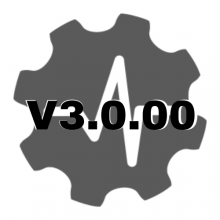Temperature Modeling
An extensive and renowned temperature model
ISP has a tradition of excellence in Temperature Modeling under the guidance of its President Dr Michel Gysen who is a renowned expert in Temperature Modeling. With more than 20 years of experience with temperature logs, ISP was the first to offer quantitative interpretation of temperature backed up by a very strong mathematical model. Because of this experience ISP’s PLATO-DTS software has been the leading interpretation package for DTS data since the technology appeared.
The temperature model of PLATO is built-in with the software and always available. Any temperature log can be used to complete an analysis. This includes continuous and discrete temperature data.
Temperature Modeling can be applied to several types of analysis whether the well is producing, injecting or shut-in. PLATO offers several WarmBack models which include a cylindrical model for injection wells with open-hole completion and a simplified model adapted to fracking operations.
The unrivaled Temperature Modeling expertise of ISP ranges from temperature simulations during well planning to complex multi-phase, multi-stages production wells.
What about DTS behind casing?
DTS behind casing is currently a popular completion set-up as it can cut down the cost of production logging as well as provide life-long monitoring for the well. However, placing the DTS fiber behind the casing means it will not be in the fluids flowing to the surface of the well. As a result the temperature recorded will not be the temperature of the produced fluids but an offset temperature which will be strongly affected by the completion (presence of insulant packers, stagnant fluids, cement…). Temperature Modeling then becomes even more complex and ISP has developed equations to model these situations.
What is the Geotherm?
Modeling temperature in a well means correlating a temperature change with fluid movement and fluid quantity. The moving fluids are going from a “container A” (the wellbore/ the formation) to a “container B” (the formation/the well). To fully model the temperature change, it is necessary to know the initial temperature of both containers before the perturbation. The well temperature is given by the measurement and the formation temperature is the Geotherm. In most cases the Geotherm is assumed not to change with time since the formation/reservoir can be considered infinite.
However, when water is injected in the formation, the Geotherm will be affected and modified, especially close to the wellbore. An appropriate Geotherm will need to be determined in order to perform a Temperature Modeling.
Can I do a 3-phase analysis with DTS only?
Even if a large number of traces is accumulated over time, DTS sums up to one measurement: Temperature. One measurement can solve a problem with one phase. For each additional phase an additional measurement will be necessary. 2 phases can be analyzed with DTS and a pressure measurement (at least one pressure gauge). 3 phases will need an additional holdup measurement or a GOR or WaterCut information.






